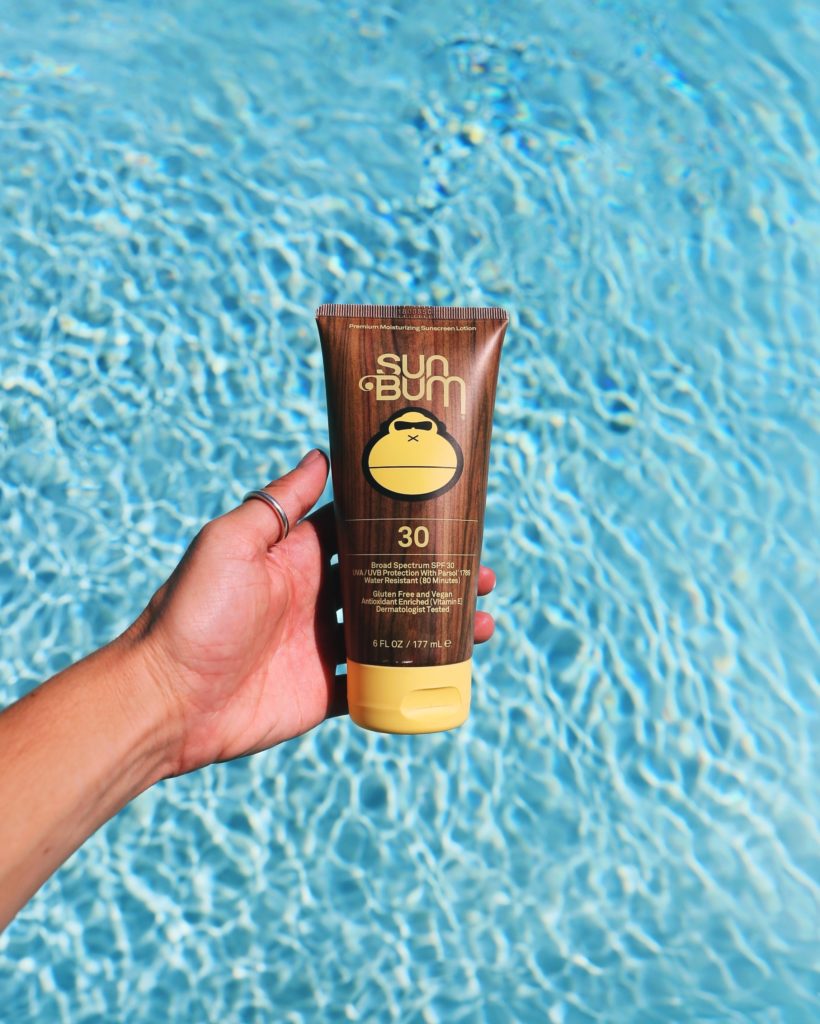Summer is here, and like many others, my family and I are eager to get outside, leaving our quarantined existence to enjoy the sunshine. We may only be going to a local park or sitting in our backyard, but before we layer on the sunscreen, we need to take a moment to read the ingredients list. What are we putting on our skin?
Environmental Working Group’s database
It is so easy to buy whatever sunscreen is available at the local drug store, but convenience should not be our only guide. To help us make the best decision, the Environmental Working Group (EWG) created its Skin Deep® list in 2004 and continues to update this database as new products are made available. Consumers can search this list for sunscreen—as well as more than 87,000 makeup, hair care, skin care, and other beauty products.
When I visited the site, I could search by product type, brand name, or ingredients. The ranking system ranges from 1 to 10, with rankings of 1-2 indicating low hazard, 3-6 indicating moderate hazard, and 7-10 indicating high hazard. These numbers relate directly to the ingredients found in the products. There is also a data availability score, ranging from “none” to “robust.” This score reflects how much is known about ingredients, based on research and scientific study.
In addition, some products are marked as “EWG Verified.” This mark indicates that a product has gone through rigorous testing and is among the safest for consumer health.
How most mainstream brands measure up
So back to the sunscreen question. I want to protect myself and my family from harmful UVA and UVB rays, but I don’t want to risk applying harmful products to our skin. What are our choices?
Let’s say my husband purchased a bottle of Coppertone Ultraguard SPF 50 from the drugstore because it was on sale. According to Skin Deep, it ranks as 3, with moderate hazard and limited data availability. Not so bad, but one ingredient in this sunscreen —oxybenzone—is listed as an 8. Yikes. This chemical has been shown to be a hormone disruptor and can aggravate skin allergies. It also is easily absorbed in the skin and has been detected in humans blood systems, and even mother’s milk. In addition to being harmful to humans, oxybenzone can damage coral reefs. Sadly, it is a main ingredient in more than 3,500 types of sunscreen. Another popular option, Banana Boat Sport Performance Lotion SPF 100, has the same ingredient, as well as parabens, so we’ll probably want to avoid that one too.
In general, active ingredients in sunscreen act as filters that prevent the sun’s rays from damaging our skin. Chemical filters can be a combination of the earlier-mentioned oxybenzone and some of the following: avobenzone, octocrylene, octisalate, homosalate, and octinoxate. Mineral sunscreens contain zinc oxide and/or titanium dioxide. A select group of products include both zinc oxide and chemical filters.
Safe sunscreens
Luckily, the EWG Skin Deep database offers safer options, including some that have earned the EWG Verified designation. Among these are Attitude Mineral Sunscreen, Tropical, SPF 30 and Solara Sun Care Clean Freak Nutrient Boosted Daily Sunscreen SPF 30. These are mineral sunscreens, which don’t include the chemicals of many commercial brands.
Word of caution—nanosize mineral particles
But even the mineral sunscreens are not perfect. Most companies use nanosize versions of zinc oxide or titanium dioxide in their products. The particle sizes help increase usability and SPF, but some research shows that nanoparticles can be harmful to the environment when they are washed off the skin. The EWG encourages the FDA to further study all sunscreen ingredients and regulate their use.
Does SPF Matter?
When choosing a sunscreen, we may wonder about SPF too, but those numbers can be misleading. In fact, the EWG warns that sunscreens with higher SPFs may actually be worse choices for you, as they contain higher concentrations of chemicals—and they may be no more effective in blocking UVA and UVB rays than those products with lower SPFs. Also, EWG research has shown that SPF numbers may not be accurate on some products.
Top 3 rules
Here are some important takeaways from the EWG’s 2020 Guide to Sunscreen:
- Avoid sprays and stick to cream versions.
- Don’t use sunscreens combined with bug repellant.
- Steer clear of SPFs over 50.
For me, all these details can seem overwhelming, but making the right choices for my family’s health and the health of the planet is worth the time and research. However, if enjoying extended time in the sun seems too risky—no matter what sunscreen we are using—we may likely opt for staying in the shade, enjoying some cool drinks, and wearing big floppy hats.
__
Photo: Taylor Simpson via Unsplash; Orest Yaremchuk via Unsplash






